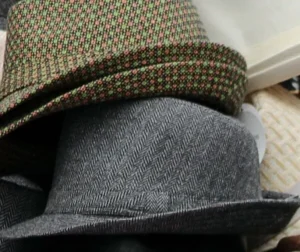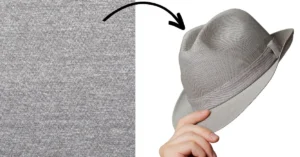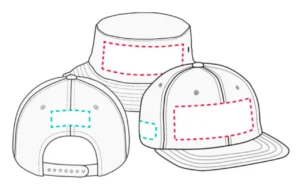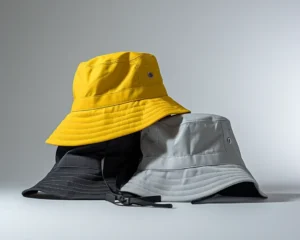Hats are more than just fashion statements—they’re a blend of culture, function, and personal style. From sun-soaked beaches to chilly mountain trails, the material of a hat plays a crucial role in how comfortable, durable, and stylish it is. But with so many options out there, what really is the most common material for hats? This question often pops up among manufacturers, designers, and consumers alike.
The most common hat materials vary by style and purpose, but cotton, wool, and synthetic blends dominate the market due to their comfort, durability, and versatility. Natural fibers like straw also hold a special place, especially in summer and outdoor hats. Understanding the strengths and weaknesses of each helps you choose the right hat for your needs.
Imagine walking into a bustling hat factory, the air buzzing with creativity and machinery. Each hat tells a story through its fabric choice, reflecting tradition, innovation, or sustainability. Ready to uncover the secrets behind the fabrics that crown your favorite hats? Let’s dive deep.
1. What Are the Most Common Materials Used in Hat Making?
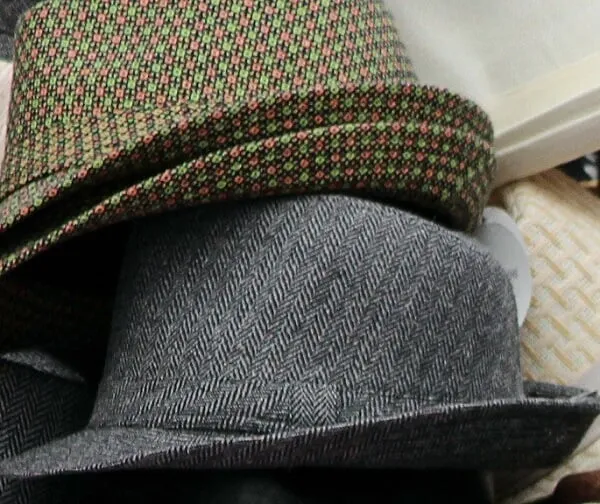
Cotton, wool, polyester, nylon, and straw are the top materials used in making hats, each selected for specific qualities like breathability, durability, or aesthetic appeal.
- Cotton: Soft, breathable, and lightweight, cotton is popular for casual hats like baseball caps and bucket hats. It’s easy to dye and maintains comfort even in warm weather. Organic cotton is gaining ground for eco-conscious consumers.
- Wool: Known for warmth and durability, wool is a classic choice for felt hats, fedoras, and beanies. It offers water resistance and excellent insulation, making it ideal for colder climates.
- Polyester & Nylon: Synthetic fibers offer wrinkle resistance, durability, and quick-drying features. They’re common in sports hats and outdoor caps. Polyester blends can mimic natural fabrics while offering enhanced performance.
- Straw: Derived from natural plant fibers (like wheat, raffia, or toquilla palm), straw is iconic for sun hats and fedoras in warm climates. Its breathability and lightness make it a summer favorite.
- Leather: Less common but high-end, leather hats provide a rugged look and durability. Often used in western or fashion hats.
| Material | Common Hat Types | Key Benefits | Typical Climate Use |
|---|---|---|---|
| Cotton | Baseball caps, bucket hats | Breathable, soft, versatile | Warm to moderate |
| Wool | Felt hats, beanies | Warm, water-resistant | Cold to moderate |
| Polyester | Sports caps, rain hats | Durable, wrinkle-resistant | All climates |
| Straw | Sun hats, fedoras | Lightweight, breathable | Hot, sunny |
| Leather | Western hats, fashion hats | Durable, stylish | Moderate to cold |
2. Which Materials Are Preferred for Different Hat Styles?

Each hat style favors specific materials: baseball caps often use cotton or polyester; sun hats prefer straw or linen blends; formal hats lean on wool felt or leather.
- Baseball Caps: Typically crafted from brushed cotton or polyester blends for softness and durability. Polyester enhances shape retention and moisture-wicking.
- Sun Hats: Straw remains the most popular for breathability and classic look. Cotton-linen blends also appear for softer textures and UV protection.
- Formal Hats: Wool felt is preferred for structure and elegance. Rabbit fur felt is a premium option, offering softness and resilience.
- Casual & Streetwear: Acrylics, denim, and corduroy are trendy choices, providing varied textures and colors.
- Performance Hats: For outdoor and sports use, synthetic materials with moisture-wicking and UV protection features are favored.
| Hat Style | Common Materials | Functional Benefits |
|---|---|---|
| Baseball Cap | Cotton, polyester blends | Softness, moisture control |
| Sun Hat | Straw, cotton-linen blends | Breathability, sun protection |
| Formal Hat | Wool felt, rabbit fur felt | Structure, elegance |
| Casual Hats | Acrylic, denim, corduroy | Texture variety, style options |
| Sports Hats | Synthetic blends | Moisture-wicking, durability |
3. How Do Material Choices Affect Hat Performance?

Hat materials influence breathability, water resistance, UV protection, and durability, directly impacting wearer comfort and hat lifespan.
- Breathability: Cotton and linen fibers allow air circulation, keeping the head cool. Straw’s natural weave also promotes ventilation.
- Water Resistance: Wool offers natural water repellency, while treated leather can resist light moisture. Synthetic fabrics often incorporate water-resistant coatings.
- UV Protection: Dense weaves and UPF-rated fabrics block harmful rays. Straw hats with tight weaving provide sun defense but vary by quality.
- Durability: Synthetic fibers generally outlast natural ones in harsh conditions. Polyester and nylon resist fading and tearing better than cotton.
| Material | Typical UPF Rating | Notes |
|---|---|---|
| Wool Felt | 30-50+ | Dense weave provides strong protection |
| Straw | 15-30 (varies) | Depends on weave tightness |
| Cotton | 5-15 | Lower UPF unless specially treated |
| Polyester | 30-50+ | Often engineered for high UPF |
4. Do Sustainable Materials Impact Hat Quality and Style?

Sustainable fabrics like organic cotton, recycled polyester, and mycelium leather are reshaping the hat industry, offering eco-friendliness without compromising style or durability.
- Organic Cotton: Grown without pesticides, it supports soil health and reduces chemical runoff. Performance is similar to conventional cotton but often pricier.
- Recycled Polyester: Converts plastic waste into fibers, cutting landfill and reducing carbon footprint. Offers durability and moisture control but can have a slight texture difference.
- Mycelium Leather: Made from mushroom roots, this innovative material is biodegradable and versatile. It’s gaining popularity in high-fashion hats, though production costs remain high.
- Trade-offs: Sustainable materials may involve higher costs or limited availability. However, consumer demand for green products is pushing brands to innovate and balance quality with ethics.
| Material | Environmental Benefit | Impact on Quality & Style |
|---|---|---|
| Organic Cotton | Pesticide-free, biodegradable | Comparable quality, often pricier |
| Recycled Polyester | Reduces plastic waste | Durable, slight texture variation |
| Mycelium Leather | Biodegradable, innovative | High-end look, evolving technology |
5. Is There a Universal “Best” Material for All Hats?
There is no one-size-fits-all best material; the ideal fabric depends on the hat’s intended use, climate, and style preference.
- Climate Considerations: Wool and leather excel in cold conditions, while straw and cotton are winners in the heat.
- Use Case: Sports hats prioritize moisture-wicking synthetics; fashion hats focus on appearance and texture.
- Versatility: Cotton offers a good balance for everyday use, blending comfort and durability.
- Innovation: New materials like mycelium leather or recycled fabrics are expanding options.
| Factor | Recommended Materials | Reasoning |
|---|---|---|
| Warm Climate | Straw, cotton | Breathable and lightweight |
| Cold Climate | Wool, leather | Insulating and water resistant |
| Sports/Activity | Polyester, nylon | Moisture management, durability |
| Fashion Focus | Wool felt, mycelium leather | Texture, structure, style versatility |
6. Are There Regional Preferences in Hat Materials?
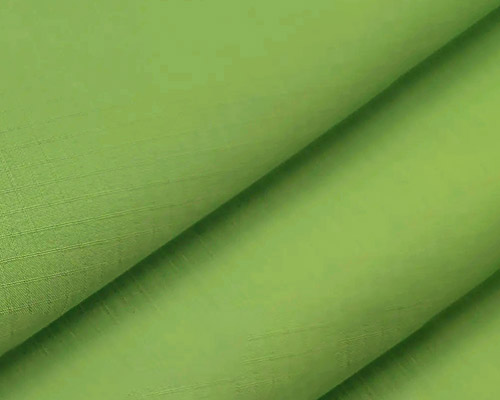
Cultural traditions and climate strongly influence material choices, from Ecuador’s toquilla palm straw hats to Europe’s felt classics.
- Latin America: Panama hats made from toquilla straw are prized for craftsmanship and breathability.
- Europe: Felt hats, especially wool or rabbit fur felt, have centuries of tradition in formal wear.
- Asia: Lightweight straw hats and cotton blends dominate in hot, humid climates.
- North America: Diverse climate zones lead to varied preferences, from wool beanies in the north to cotton caps in the south.
- Fashion Trends: Local trends and availability also impact material adoption, with global brands adjusting collections accordingly.
| Region | Popular Materials | Climate & Cultural Influence |
|---|---|---|
| Latin America | Toquilla straw | Hot climate, artisanal tradition |
| Europe | Wool felt, rabbit fur felt | Cold climate, formal fashion |
| Asia | Straw, cotton blends | Hot, humid climate |
| North America | Wool, cotton, synthetics | Varied climate, fashion diversity |
Ready to Choose Your Perfect Hat Material?
Selecting the right hat material blends comfort, style, function, and sustainability. Whether you want the classic softness of cotton, the warmth of wool, or the eco-conscious edge of recycled fibers, understanding these materials helps you make informed choices.
At Kinwin, we specialize in creating high-quality hats tailored to your unique needs. With advanced manufacturing capabilities and a commitment to sustainability, we deliver durable, beautiful, and eco-friendly hats for every occasion.
Contact us today to discuss custom hat orders and elevate your brand with expertly crafted headwear designed to impress and perform.



